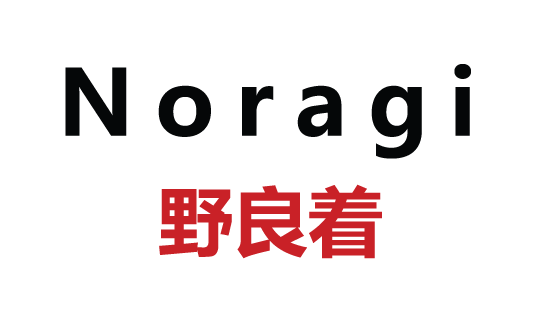Kaya Cloth
Share
Kaya cloth is a traditional Japanese textile known for its use as mosquito netting. The history of kaya cloth, its uses, and its cultural significance provide a fascinating glimpse into Japan's textile heritage.
Origins and History
Early Use
Kaya cloth has been used in Japan for centuries, with its origins likely dating back to the Heian period (794-1185). Initially, mosquito nets were made from other materials, but kaya cloth became the preferred choice due to its lightness, breathability, and effectiveness in keeping insects out. Most commonly made from hemp, it can also often include other regionally found fibres like nettle.
Production Techniques
Spinning and Weaving:
Spinning: Hemp or cotton fibres were spun into thin, strong threads.
Weaving: These threads were woven into a loose, open-weave fabric that allowed air to pass through while keeping insects out.
Bleaching:
Kaya cloth was often bleached to achieve a bright white color, which added to its aesthetic appeal and reflected its cleanliness.
Uses:
Mosquito Nets:
The primary use of kaya cloth was to create mosquito nets (kaya). These nets were draped over sleeping areas to protect people from mosquito bites, which were not only annoying but also posed health risks due to diseases like malaria.
Culinary Uses:
Kaya cloth was also used in the kitchen for straining liquids, covering food, and other culinary purposes due to its breathable and hygienic properties.
Other Uses:
It was used in various other applications, such as in the making of traditional clothing and accessories.
Cultural Significance
Symbol of Summer: Kaya cloth and the mosquito nets made from it became symbols of the summer season in Japan. The sight of a kaya net often evoked a sense of nostalgia and the simple, serene life of the countryside.
Aesthetic Appeal: The light, airy quality of kaya cloth made it an aesthetically pleasing material, contributing to its use in various decorative and practical applications.
Decline
With modernization and the advent of synthetic materials, the use of traditional kaya cloth declined in the 20th century. Ready-made mosquito nets made from synthetic fibers became widely available and were cheaper to produce.
Revival
In recent years, there has been a renewed interest in traditional crafts and sustainable materials. Kaya cloth has seen a revival as people seek eco-friendly and aesthetically pleasing alternatives to synthetic products. Artisans and craftspeople are rediscovering and promoting the traditional techniques of making kaya cloth.
Modern Applications
Home Decor: Kaya cloth is used in contemporary home decor, including curtains, tablecloths, and room dividers, valued for its natural beauty and texture.
Fashion: Designers incorporate kaya cloth into clothing and accessories, blending traditional materials with modern styles.
Culinary Arts: Kaya cloth continues to be used in the kitchen for straining and wrapping food, appreciated for its natural properties.
Origins and History
Early Use
Kaya cloth has been used in Japan for centuries, with its origins likely dating back to the Heian period (794-1185). Initially, mosquito nets were made from other materials, but kaya cloth became the preferred choice due to its lightness, breathability, and effectiveness in keeping insects out. Most commonly made from hemp, it can also often include other regionally found fibres like nettle.
Production Techniques
Spinning and Weaving:
Spinning: Hemp or cotton fibres were spun into thin, strong threads.
Weaving: These threads were woven into a loose, open-weave fabric that allowed air to pass through while keeping insects out.
Bleaching:
Kaya cloth was often bleached to achieve a bright white color, which added to its aesthetic appeal and reflected its cleanliness.
Uses:
Mosquito Nets:
The primary use of kaya cloth was to create mosquito nets (kaya). These nets were draped over sleeping areas to protect people from mosquito bites, which were not only annoying but also posed health risks due to diseases like malaria.
Culinary Uses:
Kaya cloth was also used in the kitchen for straining liquids, covering food, and other culinary purposes due to its breathable and hygienic properties.
Other Uses:
It was used in various other applications, such as in the making of traditional clothing and accessories.
Cultural Significance
Symbol of Summer: Kaya cloth and the mosquito nets made from it became symbols of the summer season in Japan. The sight of a kaya net often evoked a sense of nostalgia and the simple, serene life of the countryside.
Aesthetic Appeal: The light, airy quality of kaya cloth made it an aesthetically pleasing material, contributing to its use in various decorative and practical applications.
Decline
With modernization and the advent of synthetic materials, the use of traditional kaya cloth declined in the 20th century. Ready-made mosquito nets made from synthetic fibers became widely available and were cheaper to produce.
Revival
In recent years, there has been a renewed interest in traditional crafts and sustainable materials. Kaya cloth has seen a revival as people seek eco-friendly and aesthetically pleasing alternatives to synthetic products. Artisans and craftspeople are rediscovering and promoting the traditional techniques of making kaya cloth.
Modern Applications
Home Decor: Kaya cloth is used in contemporary home decor, including curtains, tablecloths, and room dividers, valued for its natural beauty and texture.
Fashion: Designers incorporate kaya cloth into clothing and accessories, blending traditional materials with modern styles.
Culinary Arts: Kaya cloth continues to be used in the kitchen for straining and wrapping food, appreciated for its natural properties.
